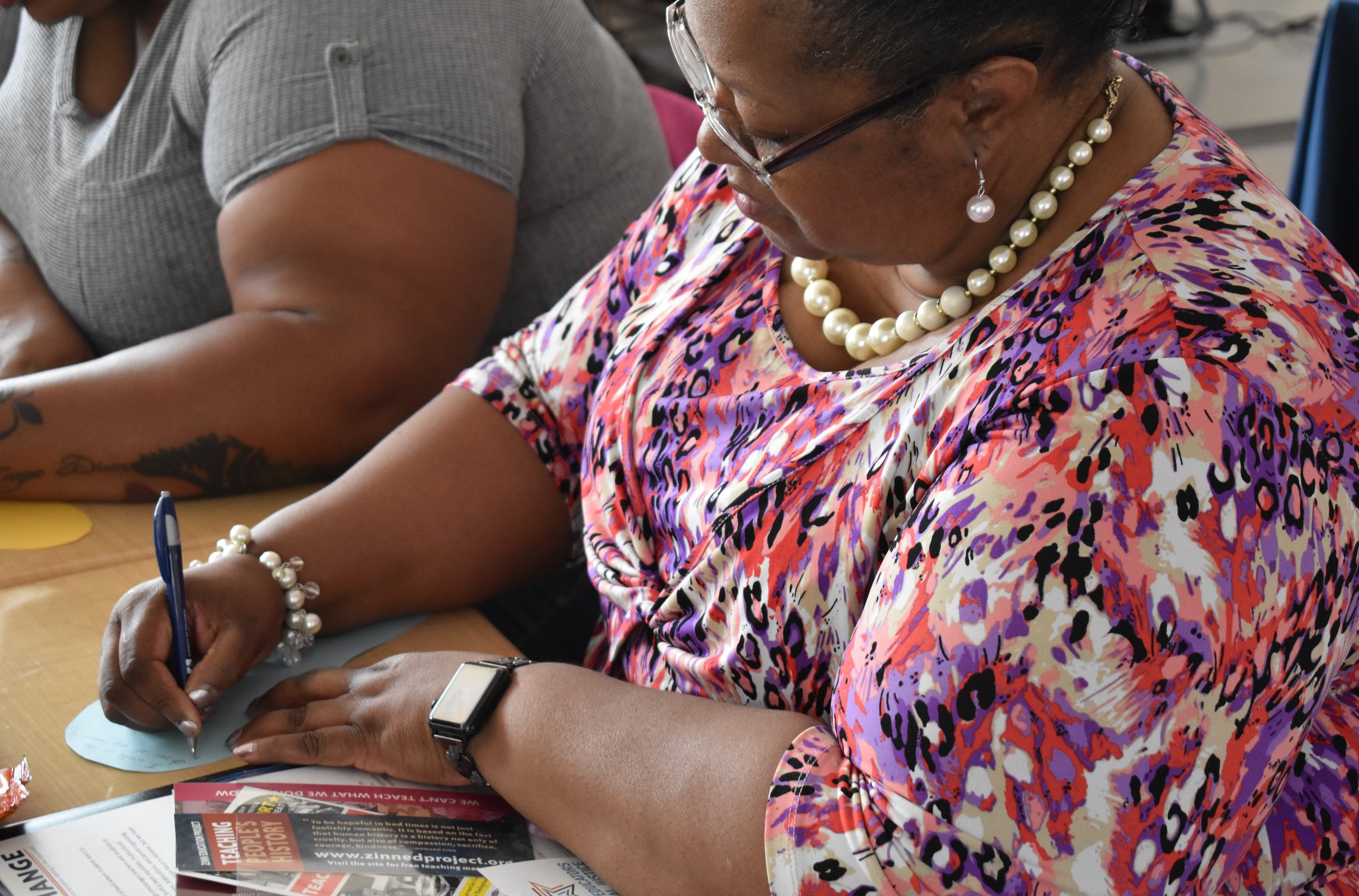Big Shoes to Fill: A Teambuilding Lesson
Lesson by Deborah Menkart
School administrators participate in the Big Shoes to Fill activity during a DC Public Schools Summer Leadership Institute. Photo by Allison Fletcher Acosta.
This lesson helps build community among the participants and makes it clear that civic engagement and activism starts with us — it’s a people’s history.
In this activity, participants write and share about the many ways they have “taken a stand” or “in whose shoes they are walking.” When the shoe stories are posted around the room, there is a constant reminder of the ways in which we can all walk for justice and of who has inspired us. The variety of stories and strategies demonstrates that the path to social justice is made up of the work and approaches of many people and organizations.
The activity is based on a Philadelphia Folklore Project Exhibit on Social Change. One of the sections of the exhibit featured the shoes of over 100 people who had worked on issues such as housing, labor, the environment, education, neighborhoods, and more. Some of the people featured in the exhibit were well-known, but most were everyday people who worked. They registered voters, advocated for kids, worked on an orange hat patrol or as a union organizer. Here are a few of the cards that were displayed with each shoe:
These shoes walked the following walk: 1962 CORE Restaurant sit-ins, Route 40 Aberdeen, MD, 1963 Martin Luther King speech — Kiyoshi Juromiya
These shoes have seen lots of changes. They fought to clean up neighborhoods. They see kids now able to play outside. They see abandoned cars moved. — Peaches Ramos
I see myself walking in the shoes of the ordinary folks who have power in their numbers and in their righteousness. — Ellen Somekawa
Grade Level: Middle school+
Time Required: One class period
Objective
Students will find strength in stories of resistance from their own lives, from peers, and from people who came before them
Materials and Preparation
Make colorful shoe templates from construction paper or card stock. Prepare enough templates in advance — one for each student plus a few extra.
Write these prompts (or your own) on easel paper or display on a whiteboard.
In whose footsteps are you following, and why?
When did you “take a stand” or “walk the walk”?
If your shoes could talk, what story would they tell of a way in which you have walked for justice?
Select a wall where the students can post their shoe stories or post them around the room to create a “road for justice.”
Procedure
Give an introduction and brief explanation and history of the activity based on the provided introduction. Tell students that they will be writing and sharing about the many ways they have “taken a stand” or “in whose shoes they are walking.”
Introduce them to the posted prompts and tell them that people write many different types of shoe stories. Tell them that you will read a sample shoe story, but that they are not required to imitate it if they want to write in a different way. Read the sample shoe story:
These shoes sat idly on my feet for so many months, watching as my brother and sister made wrong decision after wrong decision. In mid-January, these shoes finally walked me to my desk, propped themselves up on the footrest, and sat patiently as I crafted a letter to my family. Keeping my feet warm while I typed into the night, these shoes wrapped my feet as I dotted the last “i” and crossed the last “t.” In mid-February, these shoes walked me to the mailbox and helped me send the letter home. Without these shoes, my family wouldn’t be what it is today.Depending on the time left, you can either have participants share their stories in small groups or go around the room and ask all to read. (If there is not enough time for everyone to listen to each story, form small groups and encourage them when they are finished to post their shoe stories on the wall and walk around reading the others’ stories that they did not get to hear.)
Once they have been shared out loud, have the participants post their shoes on a preselected wall. Ask them to post the shoes so that they form a road — the road we are making for justice.

